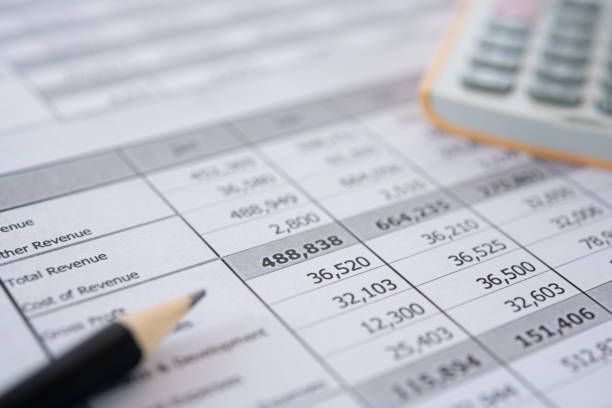
Here's a number that might surprise you: there was just under $17.8 billion in lost super waiting to be claimed as at 30 June 2024, according to the Australian Taxation Office (ATO). That's nearly $18 billion just sitting there, unclaimed.
And right now, sitting in letterboxes and email inboxes across Australia, are millions of annual superannuation statements that could help you claim your share.
If you're among those who glance at that envelope from your super fund and think 'I'll deal with this later' before filing it away with the other paperwork, you're not alone.
But this simple document could be the key to significantly boosting your retirement nest egg.
In this article
Your Super Has Been Performing Better Than You Might Think
Before we dive into what to look for in your statement, here's some encouraging news: your super has likely been working harder for you than you realise.
The median Growth fund returned 10.5 per cent in the 2025 financial year, following strong returns of 9.1 per cent in 2024 and 9.2 per cent in 2023. That's three consecutive years of solid performance.
Even better, for the first time, all MySuper products passed APRA's annual performance test in 2024. This compares with one fail in 2023, five fails in 2022 and 13 fails in the inaugural test in 2021.
What this means is that if you're in a default MySuper option, your fund has met the regulator's benchmarks for delivering value to members.
Major funds have been delivering solid results too. AustralianSuper's Balanced option, where most members are invested, returned 9.52 per cent for the financial year ending 30 June 2025, while Aware Super's High Growth option delivered 8.83 per cent per year over the 10 years to 30 June 2025.
'These annual statements are the most important document of the year because they give you the chance to notice any unnecessary charges and if your provider is underperforming'
The Reality Check: Most Australians Are Behind
Despite these strong returns, here's the sobering reality: around 75 to 80 per cent of individuals have balances below $500,000 around the time of retirement.
Yet the Association of Superannuation Funds of Australia estimates that a couple hoping for a 'comfortable' retirement will need $690,000 in savings and a single person will need $595,000.
This gap makes every dollar in your super account more precious, and every fee you pay more significant. It also means that small improvements in performance or reductions in fees can have an outsized impact on your final retirement balance.
Small Differences, Big Impact: Why Fees Matter More Than You Think
Here's where your annual statement becomes crucial. Those fees listed in the fine print aren't just numbers—they're directly eating into your retirement savings.
Australians paid out more than $10.2 billion in total fees to super funds in the financial year to June 2024, according to figures from the Australian Prudential Regulation Authority.
The impact of fees compounds over time. Someone paying 0.75 per cent of their super balance in fees per year would have $92,700 more at retirement age of 67 compared to someone paying 1.50 per cent of their balance in fees. That's nearly $100,000 more in retirement income, just from choosing a lower-fee fund.
What Your Annual Statement Should Tell You
Your account balance and how it's changed over the year
Investment performance compared to benchmarks
All fees you've paid (administration, investment, insurance)
How your money is invested (asset allocation)
Insurance cover details and costs
Beneficiary information
Recent contributions from your employer
The Hunt for Lost Super: You Might Have More Than You Think
One of the most valuable exercises your annual statement can prompt is checking for lost super. In 2024, around 78 per cent of Australians held a single super account, an increase from 74 per cent in 2020.
This improvement suggests more people are consolidating their accounts, but it also means 22 per cent of Australians still have multiple accounts.
If you've changed jobs, moved states, or had different employers over your career, there's a good chance you have super scattered across different funds. Each additional account means additional fees eating into your balance.
The good news is that finding and consolidating lost super has never been easier. You can use your myGov account to search for and transfer lost super accounts, often within minutes.
What to Look For: Your Super Statement Checklist
When your statement arrives, don't just glance at the balance. Here's what deserves your attention:
Performance comparison: Your statement should show how your investment option performed against similar funds. If you're consistently underperforming, it might be time to consider switching.
Fee breakdown: Look for the total annual fees you've paid. If they seem high compared to similar funds, use the ATO's YourSuper comparison tool to see alternatives.
Insurance costs: Many people don't realise how much they're paying for insurance through their super. If you have multiple accounts, you might be paying for duplicate coverage.
Contribution matching: Check that your employer's contributions match your pay slips. With super guarantee now at 12 per cent, make sure you're receiving the full amount you're entitled to.
Common Mistakes That Could Cost You Thousands
Research reveals several mistakes that Australian seniors commonly make with their super:
Switching to cash during market downturns: When markets crash, it's tempting to move your super to a conservative option. But this often means locking in losses and missing the recovery.
Ignoring multiple accounts: Each super account you hold typically charges separate administration fees. Even small balances can be eroded by fees over time.
Not updating beneficiaries: Life changes like marriage, divorce, or the birth of grandchildren should prompt a beneficiary review.
Assuming all funds are the same: There can be significant differences in performance and fees between funds. The ATO's comparison tool shows some funds charge twice as much in fees as others for similar services.
Taking Action: Your Next Steps
If your statement reveals issues or opportunities, here's your action plan:
Use the ATO's YourSuper comparison tool: This free service lets you compare your fund's performance and fees against alternatives. You simply enter your age and balance, and it shows you options ranked by expected returns.
Consolidate multiple accounts: If you find lost super or have multiple accounts, consider consolidating them. Just be careful not to lose valuable insurance cover in the process.
Review your investment strategy: As you approach or enter retirement, your investment mix might need adjusting. But don't make knee-jerk reactions to short-term market movements.
Check your insurance: Make sure you're not over-insured or under-insured, and that you're not paying for duplicate cover across multiple accounts.
Did you know?
Did you know?
The ATO's YourSuper comparison tool analysed by Yahoo Finance showed 54 different funds to choose from, with the lowest 10-year net return rate being 5.55 per cent and the highest being 7.66 per cent. The cheapest account had a $671 annual fee, while the highest charged $1,121 per year.
When Your Statement Arrives: Major Fund Timeline
Most super funds send statements between September and December. Here's when to expect yours from the major funds:
- AustralianSuper: Late September to November
- Australian Retirement Trust: September to December
- Aware Super: From September 11
- UniSuper: September
- HOSTPLUS: September
- CBUS: September to October
- REST: September to October
- HESTA: November to December
Example Scenario
- Meet Margaret from Brisbane: Margaret, 62, received her annual statement showing her AustralianSuper balance had grown to $380,000. But she also discovered she had an old account with $15,000 from a previous job that was being eroded by fees. By consolidating her accounts and switching to a lower-fee investment option, she's projected to have an extra $25,000 by retirement—enough for a nice holiday or home improvements.
The Switching Decision: What to Consider
If your statement reveals your fund is underperforming or charging high fees, switching might be worthwhile. But don't rush. Consider:
Insurance implications: You might lose valuable insurance cover when you switch. Make sure you understand what you're giving up and whether you can replace it.
Exit fees: Some older funds charge exit fees, though these are less common now.
Investment timeframe: If you're close to retirement, the benefits of switching might be reduced compared to someone with decades of working life ahead.
Employer requirements: Some employers have arrangements with specific funds, so check whether switching affects your contributions.
Make Your Super Statement Work for You
- Don't treat it as junk mail—your super statement contains crucial information about your retirement future
- Check performance against similar funds using the ATO's free comparison tool
- Look for multiple accounts that might be costing you in duplicate fees
- Ensure your employer contributions match the 12 per cent super guarantee rate
- Consider consolidating accounts, but watch out for insurance implications
- Use government resources like myGov to find and claim lost super
Beyond the Statement: Staying Engaged
Your annual super statement is just one touchpoint in managing your retirement savings. The most successful retirees check their super regularly throughout the year, not just when the statement arrives.
Consider setting up online access to your super account so you can monitor performance and make adjustments as needed. Most major funds offer mobile apps that make it easy to check balances and performance on the go.
Remember, superannuation isn't a set-and-forget investment. It requires active management to ensure you're getting the best possible outcome for your retirement years.
What This Means For You
The Bottom Line
Your super statement isn't just another piece of paperwork—it's a roadmap to your retirement security. With most Australians falling short of the comfortable retirement benchmark, every decision you make about your super matters.
Take the time to read your statement carefully when it arrives. Use the free government tools to compare your fund's performance and fees.
If you find problems or opportunities, don't hesitate to act. The decisions you make today about your super could mean tens of thousands of dollars more in retirement.
Your future self will thank you for the attention you pay to that envelope today.
What's your experience been with your super statements? Have you discovered any surprises when digging into the details, or found lost super you'd forgotten about? Share your super statement stories and tips in the comments below—your experience might help other members make better decisions about their retirement savings.
Original Article
https://au.finance.yahoo.com/news/1...ar-sent-to-millions-of-aussies-040154802.html
How much super do you need to retire? | Canstar
Cited text: There was just under $17.8 billion in lost super waiting to be claimed as at 30 June 2024, according to the Australian Taxation Office (ATO).
Excerpt: there was just under $17.8 billion in lost super waiting to be claimed as at 30 June 2024, according to the Australian Taxation Office (ATO)
https://www.canstar.com.au/superannuation/how-much-super-retire/
Super fund performance: Annual returns to June 2025
Cited text: Against a backdrop of Trump’s on-again, off-again tariffs and rising geopolitical tensions, with high market volatility, the median Growth fund return...
Excerpt: The median Growth fund returned 10.5 per cent in the 2025 financial year
https://www.superguide.com.au/comparing-super-funds/super-funds-returns-financial-year
APRA releases 2024 superannuation performance test results | APRA
Cited text: · For the first time, all MySuper products passed the test. This compares with one fail in 2023, five fails in 2022 and 13 fails in the inaugural tes...
Excerpt: for the first time, all MySuper products passed APRA's annual performance test in 2024.
https://www.apra.gov.au/news-and-pu...-2024-superannuation-performance-test-results
FY25 Performance Update | AustralianSuper
Cited text: The Balanced option (Super), where most members are invested, returned 9.52 per cent for the financial year ending 30 June 2025.
Excerpt: AustralianSuper's Balanced option, where most members are invested, returned 9.52 per cent for the financial year ending 30 June 2025
https://www.australiansuper.com/investments/investment-articles/2025/07/fy25-investment-performance
Investment performance | Aware Super—Australian Superannuation Fund
Cited text: A strong 8.83 per cent p.a. over ten years to 30 June 2025 is great news for members in our High Growth option, where a majority of members are invested.
Excerpt: Aware Super's High Growth option delivered 8.83 per cent per year over the 10 years to 30 June 2025
https://aware.com.au/member/what-we-offer/investments/investment-performance
November 2023 An update on superannuation account balances
Cited text: There is considerable dispersion in account balances of those retiring. Around 75 per · cent to 80 per cent of individuals have balances below $500,00...
Excerpt: around 75 to 80 per cent of individuals have balances below $500,000 around the time of retirement
https://www.superannuation.asn.au/w..._superannuation_account_balances_Paper_V2.pdf
How much super do you need to retire? | Canstar
Cited text: The Association of Superannuation Funds of Australia (ASFA) Retirement Standard (which benchmarks the annual budget needed by Australians to fund a co...
Excerpt: the Association of Superannuation Funds of Australia estimates that a couple hoping for a 'comfortable' retirement will need $690,000 in savings and a single person will need $595,000
https://www.canstar.com.au/superannuation/how-much-super-retire/
ASFA Retirement Standard (glossary definition) - Moneysmart.gov.au
Cited text: ASFA estimates that the lump sum needed at retirement to support a comfortable lifestyle is $690,000 for a couple and $595,000 for a single person.
Excerpt: the Association of Superannuation Funds of Australia estimates that a couple hoping for a 'comfortable' retirement will need $690,000 in savings and a single person will need $595,000
https://moneysmart.gov.au/glossary/asfa-retirement-standard
Cheapest Low Fee Super Funds | Canstar
Cited text: Australians paid out more than $10.2 billion in total fees to super funds in the financial year to June 2024, according to figures from the Australian...
Excerpt: Australians paid out more than $10.2 billion in total fees to super funds in the financial year to June 2024, according to figures from the Australian Prudential Regulation Authority
https://www.canstar.com.au/superannuation/compare/super-funds-lowest-fees/
Australian superannuation fees and costs explained
Cited text: In this scenario, someone paying 0.75 per cent of their super balance in fees per year would have $92,700 more at retirement age of 67 compared to someone pay...
Excerpt: Someone paying 0.75 per cent of their super balance in fees per year would have $92,700 more at retirement age of 67 compared to someone paying 1.50 per cent of their balance in fees
https://www.canstar.com.au/superannuation/fees-explained/
Consolidate your super
Cited text: In 2024, around 78 per cent of Australians held a single super account, an increase from 74 per cent in 2020.
Excerpt: In 2024, around 78 per cent of Australians held a single super account, an increase from 74 per cent in 2020
https://aware.com.au/member/super/access-and-manage-your-account/consolidate-your-super







